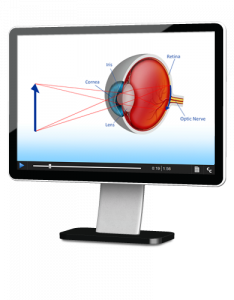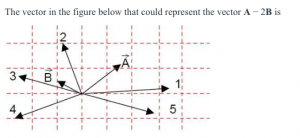Course Format and Philosophy
Student Responsibilities Outside of Class: Prelecture, Reading, Homework, and Quiz
As noted in the previous section, we hope to use more of our face to face classtime to reinforce and extend content by engaging students in facilitated practice, analytical, evaluative, and creative thinking, problem solving, projects, and social learning. In order to make the best use of face to face opportunities, students need to come to class with some familiarity and basic understanding of the content knowledge they will be working with in class, discussion, and lab. Students are assigned four different elements to help them with this preparation.
Pre-lecture: FlipIt Physics
Students are required to view the content and answer comprehension questions in FlipIt Phyics prior to coming to a Whole Class Meeting (this is the nomenclature used within the REACH initiative rather than lecture.)
 FlipIt Physics consists of:
FlipIt Physics consists of:
“Animated, narrated Prelectures introduce and overview core physics topics, laying the groundwork for conceptual understanding before students ever set foot in class. Each Prelecture activity is about 15 minutes long, and contains embedded questions that help students check their understanding along the way” (Macmillian Learning, 2019).
Students also answer ‘Bridge Questions’ which are, “…multiple-choice and free-response questions overview the content covered during the Prelecture” (Macmillian Learning, 2019). Instructors can review the data generated by the Bridge Questions responses to uncover generalized misconceptions.
Pre-lecture is due directly before the first section’s Whole Class meetings, execpt for review days.
Readings
Students are also assigned more traditional readings for each week from the online textbook College Physics, distributed by OpenStax. OpenStax provides opensource texts that are free and downloadable. The textbook is described as:
“College Physics meets standard scope and sequence requirements for a two-semester introductory algebra-based physics course. The text is grounded in real-world examples to help students grasp fundamental physics concepts. It requires knowledge of algebra and some trigonometry, but not calculus. College Physics includes learning objectives, concept questions, links to labs and simulations, and ample practice opportunities for traditional physics application problems” (Urone, Hinrichs, Dirks, & Sharma, 2012).
Readings are expected to be completed early in the week, and more specifically before Whole Class Meetings.
Homework
Along with the readings, students are also assigned problem sets. While these are not directly from OpenStax College Physics, they do cover allow the students to practice in a more traditional manner that may be indicative of the type of physics problems they could see on standardized tests like the MCAT. Currently, problems are chosen from and autoscored using a third party online homework system, Sapling, which is part of Macmillan publishing.
Homework is due the Sunday for the previous week’s topics. ˆ
Quizzes
Each week students also complete a online quiz in Canvas. Quizzes are around 12/13 questions which are ideally representative of the types of questions they will enconter on the exams. Quiz solutions are provided after the due date and time for each weekly quiz passes.
Below is an example of a 103 quiz question from Week 3-2D Motion and Forces.

(The question reads: The vector in the figure below that could represent vector A-2B is:)
The Weekly Quiz is due the Sunday for the previous week’s topics.

